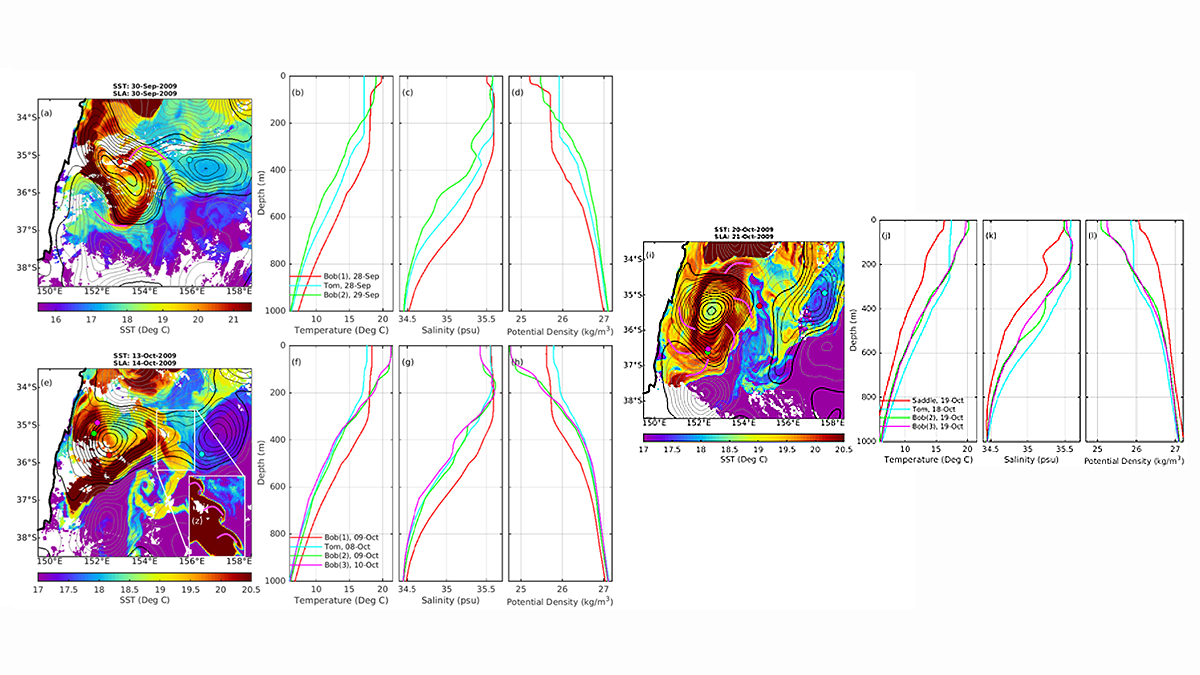Editors’ Highlights are summaries of recent papers by AGU’s journal editors.
Source: Journal of Geophysical Research: Oceans
Previous theoretical studies suggest that when two eddies with different sizes and strengths encounter, the weaker and smaller eddy wraps around the other larger and stronger eddy. Previous sporadic observations showed vertically stacked, multi-layer structures, suggesting possible occurrences of eddy mergers.
Using recent Argo profiling float data and a simple conceptual model of eddy wrapping, Rykova and Oke [2022] document how an eddy merger event could form spiraling of mixed water filaments of a denser smaller eddy, called Tom, wrapping around the other larger less dense eddy, called Bob, in the Tasman Sea. The authors find that these merger events occur more ubiquitously and frequently than previously thought. Their results may have significant implications on water mass modifications, energy transfer, and ocean biogeochemistry.
Citation: Rykova, T., & Oke, P. R. (2022). Stacking of EAC eddies observed from Argo. Journal of Geophysical Research: Oceans, 127, e2022JC018679. https://doi.org/10.1029/2022JC018679
—Takeyoshi Nagai, Editor, Journal of Geophysical Research: Oceans

